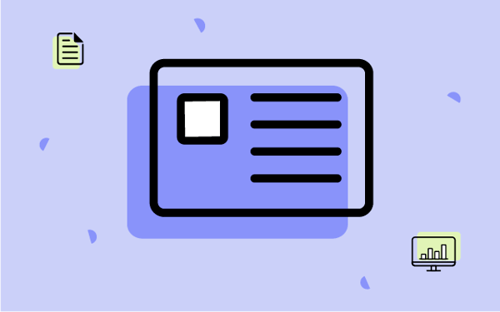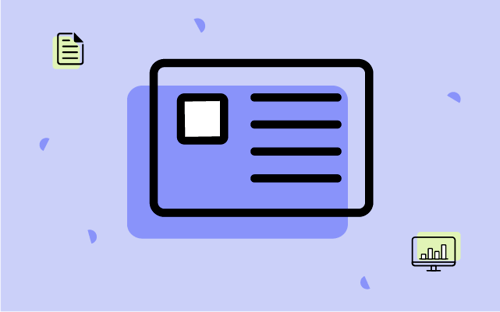Writing landing page copy, cooking up AdWords campaigns, agonizing over email subject lines - demand generation marketers have a lot on their plate. It’s no surprise that demand gen teams are not typically involved in the creation of competitive analyses; competitor analysis is a time-consuming endeavor. For that reason, competitor analysis typically falls into the realm of product marketing or a dedicated competitive intelligence (CI) team. But despite their removal from the CI process, demand gen marketers are doing themselves a disservice if they aren’t consuming the output of the competitive analyses produced by their CI team.
Campaign-driven marketers are frequently an afterthought when product marketing or CI teams scope the competitive landscape, create battlecards, and do everything possible to support the sales team in its effort to differentiate from the competition. After all, sales reps are the only ones directly battling competitive objections, right?
Not quite.
The Need for Preemptive Marketing
The best salespeople in any organization excel at handling live objections they receive while speaking with prospective customers. However, many of the best salespeople also take it one step further with another concept: preemptive objection handling. The notion here is to shape the conversation in a way that addresses common objections before prospective customers can ask pointed questions about product features, pricing, or other differentiators your competitors may possess.
For example, let’s say one of your competitors offers much more robust implementation services than your company. An effective salesperson might proactively address that concern by positioning their solution as considerably more flexible, and as such, requires no dedicated implementation services to set up.
The idea of preempting objections is something demand generation marketers should shamelessly steal from sales. While this tactic is something salespeople can selectively leverage in tandem with handling live objections in conversation, marketers aren’t able to receive live feedback. Instead, if their ad copy, email subject line, or landing page copy doesn’t preemptively address a pre-existing concern a prospect possesses, prospects may just ignore that ad, email, or landing page offer altogether.
This is a particularly important concept for organizations in industries with entrenched incumbents that have effectively shaped the vocabulary of every conversation. For example, if you were to create your own brand of diet cola, ads deployed by your digital marketing team that encourage consumers to try it, because it contains no calories, would fall on deaf ears. Lack of calories is not a differentiator here; Diet Coke’s entrenched industry dominance has made that quality table stakes, and Coca-Cola is already preaching that quality louder than your brand will ever be able to. However, if your digital marketing team was informed that Coca-Cola currently offers no sodas free from aspartame and your soda happened to be aspartame-free, an ad that pushes that differentiator would be much better received.
This would be a fairly minor issue in the case of soda startup vs. Coca Cola. But in industries with complex products and nuanced differences in product features (and thus, more nuanced business-level benefits derived from those products/features), marketers can find themselves unsure of how to make their campaign messages stand out.
Imagine your organization sells three different software offerings across five distinct industries. Each product possesses its own unique differentiators that vary across industries that create a myriad of competitive objections to be preemptively addressed. Without an understanding of the differentiators in each product/industry, your demand generation team may fall back on generic ad copy that falls on deaf ears. Worse yet, they may make the exact same claims as your competitors who possess better brand recognition and whose claims are more credible in the eyes of potential buyers.
This issue is also multiplied by rapid product/industry development and the accompanying changes in how your competitors position and promote their offerings. If your largest competitor launches a new product tomorrow that necessitates a shift in the way you differentiate your company’s offerings, would your demand generation team be armed with the enablement required to pivot the copy in all of their campaigns? Even in organizations with dedicated CI teams, the marketers driving go-to-market campaigns rarely receive the same level of competitive enablement provided to other teams like sales and product.
How to Feed Demand Generation with Competitive Intelligence
None of this is to say that the strategy behind marketing campaigns should devolve into a tit-for-tat approach to game theory in which your product-level differentiators dictate all campaign messaging. Most marketers would agree that campaigns should focus less around product features and more around business-level benefits derived from the consumption of your product/service. However, the former generally translates to the latter.
Monitoring your competitors’ key landing pages and website pages can provide helpful insight into campaign and messaging strategies. Landing pages that are tied to campaigns are particularly valuable targets for monitoring. Any changes to the title, copy, and metadata can signal broader changes in how campaigns are being run. Keeping track of A/B tests being run by the competition is also hugely valuable. A/B tests can signal an upcoming change in messaging, website design, and more. They can also provide inspiration for landing page optimizations your own demand generation team can leverage.
Battlecards are a popular weapon used to arm sales teams against the claims made by competitors and can help improve the win rate of competitive deals. Why not arm demand generation with similar, albeit higher level, knowledge?
Demand generation marketers don’t need a deep understanding of how their product’s functionality differs from the competition. What they do need to understand is, for example, that their product’s advanced workflow functionality helps their customers drive products to market 20% faster than that of the competition. They also need to know when their main competitor releases similar functionality and the language used by that competitor’s marketing team to promote that new functionality.
Remember, your organization is one of the many companies in your market deploying ads, emails, and more to vie for your audience’s time and money. It never hurts to understand what your competitors are saying before you launch a new campaign.

Related Blog Posts
Popular Posts
-
 The 8 Free Market Research Tools and Resources You Need to Know
The 8 Free Market Research Tools and Resources You Need to Know
-
 6 Competitive Advantage Examples From the Real World
6 Competitive Advantage Examples From the Real World
-
 How to Create a Competitive Matrix (Step-by-Step Guide With Examples + Free Templates)
How to Create a Competitive Matrix (Step-by-Step Guide With Examples + Free Templates)
-
 24 Questions to Consider for Your Next SWOT Analysis
24 Questions to Consider for Your Next SWOT Analysis
-
 How to Measure Product Launch Success: 12 KPIs You Should Be Tracking
How to Measure Product Launch Success: 12 KPIs You Should Be Tracking





